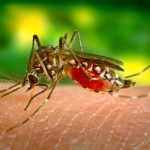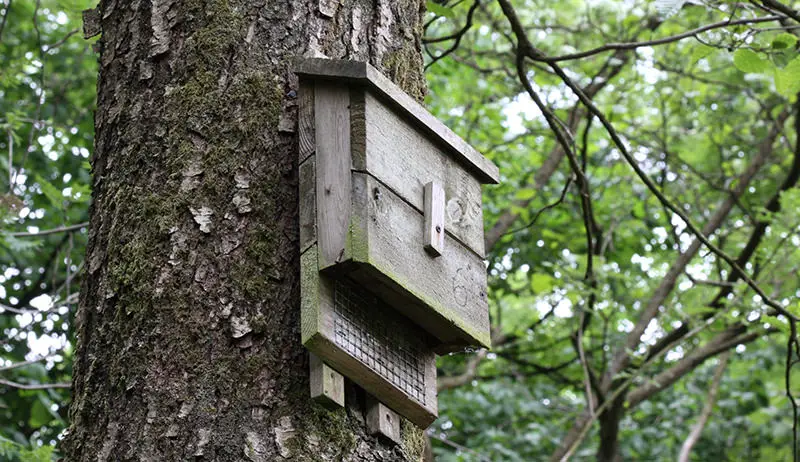To attract bats to a bat house, provide ample shelter and food sources in the surrounding area. In order to encourage bats to inhabit a bat house, it is important to create an environment that is attractive and conducive for their needs.
This can be achieved by ensuring that the bat house is properly installed in a suitable location with adequate sunlight and protection from predators. Additionally, planting native plants that attract insects, such as moths and mosquitoes, will provide a natural food source for bats.
Avoid using pesticides, as these can harm bats and their food supply. By creating an inviting habitat, bats are more likely to find and inhabit a bat house.

Credit: seedarmory.com
The Importance Of Bats In Your Garden
Attract bats to your bat house and reap the benefits they bring to your garden. These flying mammals are natural pest controllers, helping to keep your garden free from pests while pollinating flowers.
Bats are fascinating creatures that can play a vital role in maintaining a healthy ecosystem in your garden. Not only are they excellent insect hunters, but they also aid in pollination. By attracting bats to your garden, you can enjoy numerous benefits while supporting these valuable creatures.
In this section, we will explore the role of bats as natural pest control, the benefits of having bats in your garden, and how to create a welcoming environment for them.
Bats As Natural Pest Control:
- Bats are voracious insect consumers, with a single bat capable of devouring hundreds of mosquitoes and other insects in just one hour.
- They target pests such as moths, beetles, and flies that can damage your plants and crops.
- By relying on bats as natural pest control, you can reduce the need for harmful chemical pesticides, promoting a more eco-friendly and sustainable garden.
Benefits Of Having Bats In Your Garden:
- Increased pollination: Bats are important pollinators for a variety of plants, including fruits, vegetables, and flowers. Their long tongues allow them to access nectar deep within a flower, spreading pollen as they feed.
- Enhanced biodiversity: By attracting bats to your garden, you contribute to the overall biodiversity of the area. Bats not only benefit your garden but also help in maintaining a balanced ecosystem by supporting populations of insects and other small mammals.
- Natural fertilization: Bat guano, or bat droppings, is a rich source of nutrients that can improve soil fertility. Having bats in your garden means having a natural fertilizer at your disposal, promoting healthy plant growth.
Creating A Welcoming Environment For Bats:
- Install a bat house: Provide bats with comfortable roosting spaces by installing bat houses in suitable locations around your garden. A well-designed bat house should have proper ventilation, be made of durable and weather-resistant materials, and be placed at least 10-15 feet high.
- Water source: Bats need a source of water close to their roosting areas. Consider adding a shallow birdbath or a small pond to your garden to attract bats.
- Avoid excessive lighting: Light pollution can disorient bats and disrupt their feeding patterns. Minimize outdoor lighting or use red or amber lights that are less attractive to insects and bats.
- Native plants: Plant native flowering plants and shrubs to provide bats with a diverse and abundant source of food. Choose plants that bloom during the evening or nighttime to align with the feeding patterns of bats.
- Avoid pesticide use: Chemical pesticides not only harm harmful insects but also negatively impact beneficial creatures like bats. Opt for organic pest control methods to ensure the well-being of bats and other wildlife.
By understanding the importance of bats in your garden and implementing measures to attract and support them, you can foster a healthier and more balanced ecosystem while reaping the benefits of natural pest control and enhanced pollination.
Understanding Bat Behavior And Habitat Preferences
Understanding bat behavior and their preferred habitats is crucial in attracting them to a bat house. By creating a suitable environment with proper roosting spaces, good ventilation, and proximity to water sources, you can increase the chances of attracting bats to your bat house.
The Behavior Patterns Of Bats
Bats are fascinating creatures with unique behavior patterns and habitat preferences. Understanding these patterns is key to attracting them to a bat house. Here are some important aspects to consider:
- Nocturnal habits and feeding patterns:
- Bats are nocturnal creatures, meaning they are most active during the night.
- They have an incredibly diverse range of feeding habits, with some species being insectivores, frugivores, or even nectarivores.
- Insectivorous bats feed on a wide variety of insects, including mosquitoes, moths, and beetles.
- Frugivorous bats primarily feed on fruits, while nectarivorous bats rely on nectar from flowers.
- Roosting preferences:
- Bats seek shelter in various types of roosting sites, such as caves, trees, and buildings.
- Installing bat houses can encourage bats to roost near your property, providing an alternative to natural habitats that may be scarce.
- Bat houses should be placed in locations that mimic their natural roosting preferences, such as near water sources, in areas with abundant insect populations, and elevated at least 10 to 12 feet high.
- Providing multiple bat houses of different sizes and designs can attract a diverse range of bat species.
Nocturnal Habits And Feeding Patterns
Bats are active during the night, and their feeding habits vary depending on the species. Here are some key points to consider regarding their nocturnal habits and feeding patterns:
- Bats are nocturnal creatures, meaning they are most active after dusk and throughout the night.
- They have diverse feeding habits, with some species feeding on insects, fruits, or even nectar.
- Insectivorous bats are particularly beneficial for controlling insect populations, feeding on pests like mosquitoes, moths, and beetles.
- Frugivorous bats rely on fruits as their primary food source, helping with pollination and seed dispersal of fruit-bearing plants.
- Nectarivorous bats are specialized feeders that have co-evolved with flowers, relying on nectar for their energy needs.
Understanding bats’ nocturnal habits and feeding preferences is essential for creating an attractive environment for them.
Roosting Preferences
Bats have specific preferences when it comes to roosting, and providing suitable housing options is crucial for attracting them. Here are some essential points to consider:
- Bats seek shelter in various roosting sites, including caves, trees, and man-made structures.
- Bat houses serve as artificial roosting sites, offering an alternative to natural habitats that might be scarce.
- To attract bats, install bat houses in prime locations that mimic their natural roosting preferences.
- Place bat houses near water sources, as bats often forage near them and require water for drinking and grooming.
- Ensure there is an abundance of insect populations nearby, as bats rely on insects as their food source.
- Mount bat houses at least 10 to 12 feet high, as bats prefer elevated roosting locations that provide safety from predators.
- Consider offering multiple bat houses of different sizes and designs to accommodate a diverse range of bat species.
By understanding bats’ roosting preferences and providing suitable housing options, you can increase the chances of attracting bats to a bat house.
Choosing The Right Location For Your Bat House
To attract bats to your bat house, choosing the right location is crucial. Consider areas with direct sunlight, at least 15 feet off the ground, and away from bright lights and noisy areas. Proper placement will increase the chances of bats roosting in your bat house.
Essential Considerations For Placing Your Bat House
When it comes to attracting bats to your bat house, choosing the right location is crucial. Bats are highly sensitive creatures that require specific conditions for nesting and roosting. To ensure the success of your bat house, consider the following essential considerations:
- Optimal height and orientation:
- Place your bat house at least 10-15 feet high on a building, pole, or tree.
- Position the bat house facing south or southeast to maximize sun exposure.
- Ensure that the bat house is easily accessible for maintenance and cleaning.
- The importance of sunlight and shade:
- Select a location that receives a minimum of six to eight hours of direct sunlight each day.
- Avoid placing the bat house in areas with excessive shade, as bats prefer warmth and sunlight.
- Incorporate nearby shade trees or vegetation to provide a comfortable environment for bats during hot summer days.
- Distance from water sources and vegetation:
- Keep your bat house at least a quarter-mile away from bodies of water, such as rivers or ponds.
- Bats prefer areas with abundant insect populations for easy feeding, so proximity to trees, gardens, or open fields is beneficial.
- Ensure there are no obstacles obstructing the flight path between the bat house and suitable foraging areas.
By considering these essential factors, you can create an ideal habitat for bats and increase the likelihood of attracting them to your bat house. Remember, a well-placed bat house not only benefits the bats but also provides you with natural pest control and helps preserve these amazing creatures.
Now that you have a better understanding of the key factors to consider when selecting a location for your bat house, it’s time to move on to the next step: construction and installation. Stay tuned for our next blog post in this series, where we will provide you with detailed instructions on how to build and install an effective bat house.
Designing And Building An Attractive Bat House
Looking to attract bats to your bat house? Learn how to design and build an attractive bat house that will entice these fascinating creatures to roost in your backyard.
If you’re looking to attract bats to your yard and provide them with a safe and comfortable home, designing and building an attractive bat house is key. Bats are important for ecosystem balance and can help control insect populations, making them valuable allies for any garden or property.
In this section, we’ll explore the essential considerations when it comes to selecting materials, ensuring proper ventilation, avoiding harmful chemicals, and incorporating specific dimensions and features for an effective bat house. We’ll also discuss the importance of installing a predator deterrent and including landing pads and exclusion nets for an inviting bat habitat.
Selecting The Right Materials For Your Bat House:
- Wood types and durability:
- Use untreated, rough-cut cedar or exterior-grade plywood for optimal durability.
- Avoid pressure-treated wood or other chemically treated materials that could harm bats.
Ensuring Proper Ventilation:
- Ventilation is crucial to prevent overheating and maintain a comfortable environment inside the bat house.
- Include 1/4-inch ventilation gaps or slots along the sides to allow airflow without compromising the bats’ security.
Avoiding Harmful Chemicals And Paints:
- Bats are sensitive to chemicals, so it is essential to avoid using harmful substances in the construction or finishing of the bat house.
- Choose non-toxic finishes or leave the wood natural to prevent any potential harm.
Dimensions And Features For An Effective Bat House:
- Chamber sizes and roosting surfaces:
- Construct multiple chambers within the bat house, each around 3/4 inch apart, to mimic natural roosting cavities.
- Ensure the interior surfaces are roughened or grooved to provide bats with a secure grip.
Installing A Predator Deterrent:
- Predators can pose a threat to bats, so it’s crucial to incorporate a predator deterrent into the bat house design.
- Attach a metal predator guard or cone below the entrance to prevent access by climbing predators.
Including Landing Pads And Exclusion Nets:
- Landing pads:
- Install a landing pad or porch made of rough-textured material to provide bats with a stable landing area.
- Extend the landing pad 4-6 inches below the entrance to offer enough space for bats.
- Exclusion nets:
- Add an exclusion netting, made of polyethylene or nylon, across the bottom of the bat house to prevent unwanted visitors like birds from entering.
By designing and building an attractive bat house, you can create a welcoming habitat for bats and contribute to their conservation efforts. Selecting the right materials, ensuring proper ventilation, avoiding harmful chemicals, incorporating specific dimensions and features, installing a predator deterrent, and including landing pads and exclusion nets are crucial steps in constructing an effective bat house.
Enhancing The Surrounding Landscape For Bat Attraction
To enhance the surrounding landscape and attract bats to a bat house, create a well-designed habitat with diverse vegetation, a water source, and dark areas for roosting. Additionally, avoid the use of pesticides to maintain a healthy ecosystem.
The success of attracting bats to a bat house greatly depends on creating an inviting environment in the surrounding landscape. By implementing the following measures, you can increase the chances of bats taking up residence in your bat house:
Native Plants And Their Attraction To Insects
- Including native plants in your landscape can be a powerful way to lure insects, which in turn serve as an abundant food source for bats.
- Select plants such as coneflowers, evening primrose, and honeysuckle that attract a wide variety of insects.
- Incorporate a diverse range of flowering plants to provide a continuous supply of nectar and pollen for bats’ insect prey.
Incorporating Water Features
- Bats require a nearby water source for drinking and hunting insects. Create a water feature, such as a small pond or birdbath, in close proximity to the bat house.
- Ensure that the water feature remains clean and fresh, as bats are highly sensitive to polluted or stagnant water.
- A water feature not only attracts bats but also adds visual appeal to your landscape.
Minimizing Outdoor Lighting And Noise Pollution
- Bats are nocturnal creatures, relying on darkness for their hunting activities. Minimize outdoor lighting around the bat house to maintain a suitable habitat.
- Use motion-sensor or low-intensity lighting to ensure minimal disturbance to the bats.
- Sound and noise pollution can disrupt bats’ foraging and roosting habits. Keep outdoor noise levels to a minimum, especially during their active hours.
By enhancing the surrounding landscape with native plants, incorporating water features, and minimizing outdoor lighting and noise pollution, you create an ideal environment that bats find attractive. Building a bat-friendly habitat increases the likelihood of bats taking up residence in your bat house and contributing to a healthy ecosystem.
Providing Food And Water Sources For Bats
Attract bats to your bat house by providing food and water sources. Install native plants that offer fruits and insects, and provide a shallow water source like a pond or birdbath for drinking.
The Importance Of Insect-Friendly Gardens
Creating an insect-friendly environment in your garden is key to attracting bats to your bat house. Bats feed primarily on insects, so providing an abundant food source is essential. Here are some ways to create an insect-friendly garden:
- Planting flowers that attract insects: Choose flowers that are known to attract insects such as butterflies, bees, and moths. These include lavender, marigolds, sunflowers, and zinnias. The presence of insects will naturally draw bats to your garden.
- Utilizing compost and mulch: Create a rich and fertile soil using compost and organic mulch. This will promote the growth of plants and attract a wide variety of insects, which will in turn nourish bats.
Creating Bat-Friendly Water Stations
Bats not only require insects for food but also need water sources to drink and bathe. Providing water stations in your garden is crucial for attracting bats. Here are a few options to consider:
- Natural water sources: If you have a pond, stream, or other natural water source in your garden, this will already be attractive to bats. Ensure that the water is accessible and clean for them to drink from.
- Constructing simple water dishes: To encourage bats, you can create shallow water dishes in your garden. Use shallow containers or trays filled with water and place them in strategic locations. Ensure that the water is fresh and changed regularly.
By incorporating insect-friendly gardening practices and providing water sources, you can create an inviting environment for bats. This will increase the likelihood of them roosting in your bat house and establishing a sustainable habitat in your garden. Remember, a healthy balance of insects and water is key to attracting and supporting bat populations.
Understanding The Annual Bat Life Cycle
Learn how to attract bats to a bat house by understanding their annual life cycle. Discover effective techniques for creating an inviting environment that will entice bats to make your bat house their home.
Attracting bats to a bat house requires a good understanding of their annual life cycle. By knowing when and where bats migrate, hibernate, and breed, you can optimize your chances of attracting these fascinating creatures to your bat house. In this section, we will explore two important aspects of the bat life cycle: hibernation patterns and migration, and the breeding season and congregation sites.
Hibernation Patterns And Migration
- Bats hibernate during the winter months to conserve energy when food is scarce. Understanding their hibernation patterns can help you create a suitable environment for them in your bat house. Here are some key points to consider:
- Bats prefer hibernating in cool, dark, and quiet places such as caves, rock crevices, or abandoned buildings.
- Ensure your bat house is located in a shaded area away from direct sunlight and has proper ventilation to maintain a cool temperature.
- Avoid installing bat houses near sources of disturbances like bright lights or high levels of noise.
- Some bat species undergo seasonal migrations, traveling long distances in search of food or suitable breeding grounds. Here are a few key facts about bat migration:
- Bats may migrate from their summer roosts to warmer regions during the colder months.
- Their migration patterns can vary depending on factors like temperature, food availability, and breeding requirements.
- Planting native trees and shrubs that produce fruits or flowers can attract insects, which are important food sources for migrating bats.
Breeding Season And Congregation Sites
- The breeding season is a crucial time for bats as they establish colonies and raise their young. Creating the right conditions for them to breed and form congregations can increase the chances of bats occupying your bat house. Consider the following points:
- Different bat species have specific breeding seasons, which can range from early spring to late summer. Research the specific breeding season for the bat species in your area.
- Providing multiple chambers with varying temperatures and humidity levels in your bat house can attract bats looking for suitable roosting and breeding sites.
- Including rough surfaces like mesh or grooved wood inside your bat house can help bats cling and roost comfortably.
- Bats often form concentration sites where large numbers of bats gather for mating, socializing, and resting. Creating an environment that mimics these congregation sites can help attract bats to your bat house. Here are a few important considerations:
- Common congregation sites include caves, tall trees, and even empty buildings. Ensure your bat house is installed in an elevated position to mimic these natural congregation sites.
- Installing multiple bat houses in close proximity to each other can create a sense of community and encourage bats to use nearby roosting options.
- Consider providing water sources like a nearby pond or birdbath, as bats are attracted to locations with readily available water.
Understanding the annual life cycle of bats, including their hibernation patterns, migration, breeding season, and congregation sites, is essential for attracting them to your bat house successfully. By creating a suitable environment that meets their needs throughout the year, you can enhance the chances of bats occupying and utilizing your bat house as a safe haven.
Monitoring And Maintaining Your Bat House
To attract bats to your bat house, it is important to monitor and maintain it regularly. Keeping it clean, providing access, and ensuring suitable conditions will increase your chances of attracting these beneficial creatures to your property.
Regular inspection and cleaning:
- Inspect the bat house at least once a year to ensure it remains in good condition and fix any damages promptly.
- As a general rule, it is recommended to clean the bat house after the bats have migrated for the winter and before they return in the spring.
- Wear protective gear such as gloves and a face mask when inspecting and cleaning the bat house.
- Remove any debris or guano (bat droppings) from the bat house using a non-toxic cleaning solution.
- Check for any signs of wear and tear, such as loose or damaged components, and repair or replace them as needed.
- Make sure the bat house is securely attached to a pole, tree, or building, and that it remains stable and level.
Recognizing signs of bat occupancy:
- Look for signs of guano (bat droppings) both inside and outside the bat house.
- Check for oily marks or stains around the entrance, which may indicate frequent use by bats.
- Listen for chirping or squeaking sounds coming from the bat house at dusk or dawn, as this could be a sign of bats occupying it.
- Observe bats emerging from or entering the bat house just after sunset or before sunrise.
- Monitor the area around the bat house for an increase in insect activity, as bats help control insect populations.
Additional steps for attracting bats:
- Install the bat house in a suitable location that meets the bats’ needs, such as near a permanent water source and away from bright lights or noise.
- Provide a clear flight path to the bat house by removing any obstacles or vegetation that could obstruct bats’ access.
- Plant native flowering plants nearby to attract insects, which will in turn attract bats.
- Consider installing a bat detector to monitor bat activity around the bat house and gather data on bat species present.
- Educate yourself about the bats native to your area and their preferred habitats and food sources.
- Create a bat-friendly environment by avoiding the use of pesticides and chemicals that can harm bats and their prey.
Remember to regularly monitor and maintain your bat house to ensure a welcoming and safe habitat for bats. By following these steps, you can increase the chances of attracting bats to your bat house and contribute to their conservation efforts.
So, grab your gloves and get ready to welcome these beneficial winged visitors!
Frequently Asked Questions Of How To Attract Bats To A Bat House
How Long Does It Take Bats To Find Bat House?
Bats may take varying amounts of time to find a bat house, ranging from a few weeks to several months. Factors such as location, proximity to natural habitats, and attractiveness of the bat house can affect how quickly bats discover it.
Placing the bat house near water sources or areas with abundant insect populations can increase the chances of bats finding it sooner. Installing bat houses on trees, poles, or buildings can also improve visibility for bats. Patience is key when waiting for bats to locate a bat house, as they rely on their own instincts to find suitable roosting spots.
By creating a favorable environment and providing a well-designed bat house, the likelihood of bats discovering and using it can be increased.
What Scent Attracts Bats?
Bats are attracted to scents that mimic their natural food sources, such as fruits and flowers.
Where Should You Not Put A Bat House?
Avoid placing a bat house in areas that receive direct sunlight for long periods of time. Bats prefer cooler and darker spaces. Additionally, do not install bat houses near bright outdoor lights or in areas with heavy human activity, as this may disturb the bats.
Furthermore, avoid placing bat houses near trees or structures that may obstruct their flight path. It is important to ensure that the bat house is securely mounted and at a height of at least 10 to 15 feet. Placing it too low may make it accessible to predators.
Following these guidelines will increase the chances of attracting bats to the bat house and providing them with a suitable habitat.
What Direction Should Bat House Face?
Bat houses should face south or southeast to receive at least six hours of direct sunlight. The ideal height for a bat house is between 12 and 20 feet. Mounting the bat house on a pole or building is recommended.
Avoid placing bat houses near bright lights, as it could attract predatory animals. The entrance should be facing downward with a landing area below. Creating a clear flight path to the bat house by removing obstacles is essential. Additionally, make sure the area around the bat house is free from excessive noise and disturbance to encourage bats to inhabit the house.
Conclusion
Attracting bats to a bat house involves creating the ideal habitat that these fascinating creatures are drawn to. By selecting a suitable location, ensuring proper installation and maintenance, and incorporating key features such as a dark interior, rough landing surface, and easy access, you can entice bats to take up residence in your bat house.
Remember to be patient and give bats time to discover and acclimate to their new home. Providing a reliable food source and reducing light pollution in your area can also help attract bats. By attracting bats to a bat house, you not only contribute to conservation efforts, but you also benefit from the invaluable ecosystem services they provide.
The presence of bats in your garden or backyard can help control insect populations and promote biodiversity. So, follow these tips and create a bat-friendly environment that benefits both you and the bats.
{ “@context”: “https://schema.org”, “@type”: “FAQPage”, “mainEntity”: [ { “@type”: “Question”, “name”: “How long does it take bats to find bat house?”, “acceptedAnswer”: { “@type”: “Answer”, “text”: “Bats may take varying amounts of time to find a bat house, ranging from a few weeks to several months. Factors such as location, proximity to natural habitats, and attractiveness of the bat house can affect how quickly bats discover it. Placing the bat house near water sources or areas with abundant insect populations can increase the chances of bats finding it sooner. Installing bat houses on trees, poles, or buildings can also improve visibility for bats. Patience is key when waiting for bats to locate a bat house, as they rely on their own instincts to find suitable roosting spots. By creating a favorable environment and providing a well-designed bat house, the likelihood of bats discovering and using it can be increased.” } } , { “@type”: “Question”, “name”: “What scent attracts bats?”, “acceptedAnswer”: { “@type”: “Answer”, “text”: “Bats are attracted to scents that mimic their natural food sources, such as fruits and flowers.” } } , { “@type”: “Question”, “name”: “Where should you not put a bat house?”, “acceptedAnswer”: { “@type”: “Answer”, “text”: “Avoid placing a bat house in areas that receive direct sunlight for long periods of time. Bats prefer cooler and darker spaces. Additionally, do not install bat houses near bright outdoor lights or in areas with heavy human activity, as this may disturb the bats. Furthermore, avoid placing bat houses near trees or structures that may obstruct their flight path. It is important to ensure that the bat house is securely mounted and at a height of at least 10 to 15 feet. Placing it too low may make it accessible to predators. Following these guidelines will increase the chances of attracting bats to the bat house and providing them with a suitable habitat.” } } , { “@type”: “Question”, “name”: “What direction should bat house face?”, “acceptedAnswer”: { “@type”: “Answer”, “text”: “Bat houses should face south or southeast to receive at least six hours of direct sunlight. The ideal height for a bat house is between 12 and 20 feet. Mounting the bat house on a pole or building is recommended. Avoid placing bat houses near bright lights, as it could attract predatory animals. The entrance should be facing downward with a landing area below. Creating a clear flight path to the bat house by removing obstacles is essential. Additionally, make sure the area around the bat house is free from excessive noise and disturbance to encourage bats to inhabit the house.” } } ] }
“My name is Leo Jacob, and I hold a Bachelor of Science degree with Honors in Applied Environmental Science and Sustainability from the University of the West of Scotland. Since childhood, I’ve been passionate about living an eco-friendly life. After completing my studies, I dedicated myself to finding simple ways to lead a more environmentally conscious lifestyle. I launched ecolifely.com to share my educational background and practical experiences with everyone, hoping to inspire others to join me in creating a greener, more sustainable world.”







